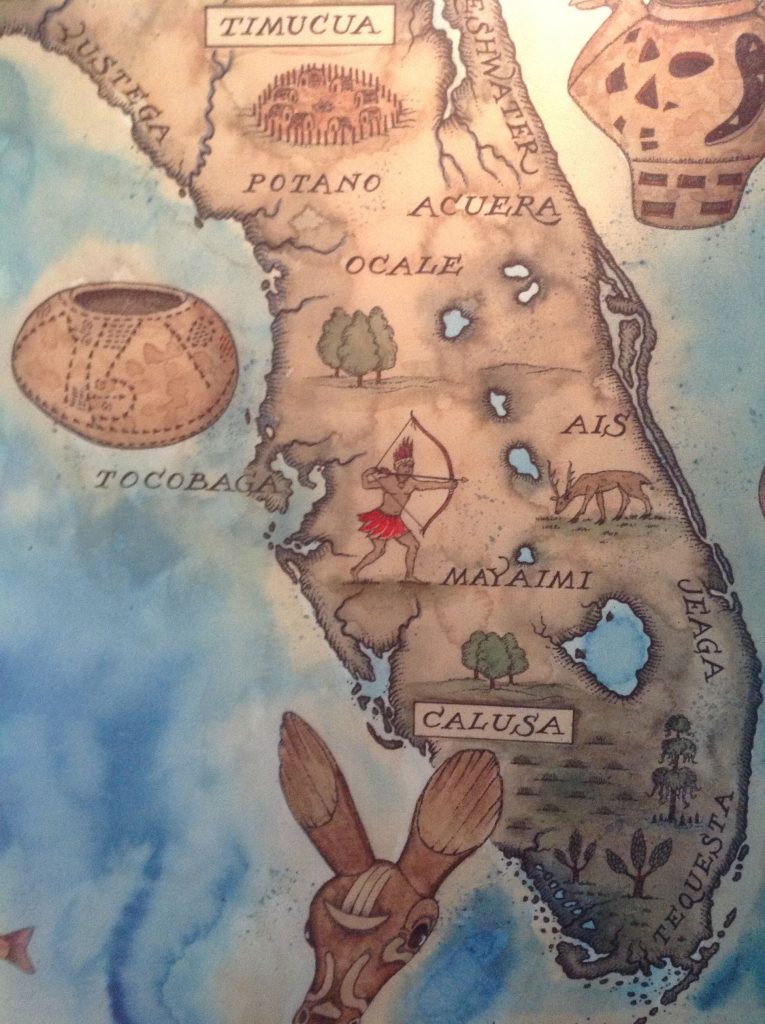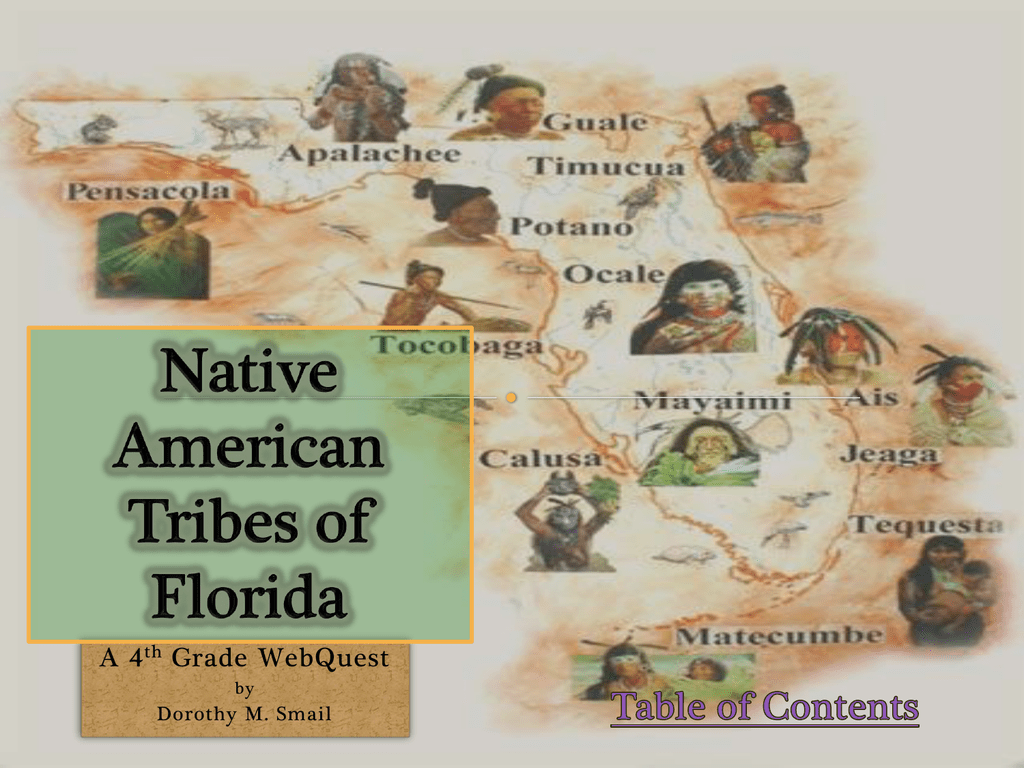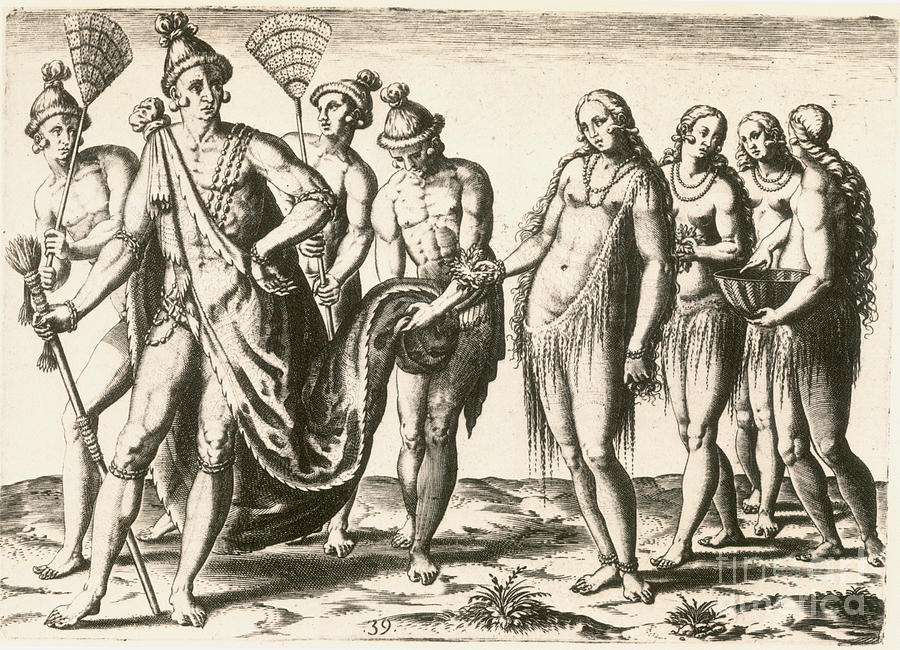A Tapestry of Resilience: Exploring the Native American Tribes of Florida
A Tapestry of Resilience: Exploring the Native American Tribes of Florida

Florida, the Sunshine State, is renowned for its vibrant beaches, bustling cities, and rich history. Yet, beneath the surface of this modern landscape lies a deep-rooted history woven by the hands of its original inhabitants – the Native American tribes. For centuries, these indigenous peoples thrived in Florida’s diverse ecosystems, their stories etched into the very fabric of the land. This article delves into the fascinating tapestry of Native American tribes in Florida, exploring their cultural practices, historical struggles, and enduring legacy.
A Diverse Landscape, A Diverse People:
Related Articles: A Tapestry of Resilience: Exploring the Native American Tribes of Florida
- Discover the Mystical Ancient Pueblo: Unearth its Enigmatic Secrets!
- Discover Visayas’ Vibrant Cultural Tapestry: A Journey of Discovery
- Echoes of Heritage: Safeguarding Indigenous Cultures for Tomorrow’s World
- Explore Apache Territory: Unveiling the Hidden Map 🗺️
- Uncover the Artistic Mastery of Apache Pottery: A Tribute to Native American Heritage
Florida’s diverse ecosystems, ranging from lush forests and rolling hills to vast wetlands and pristine coastlines, provided a unique environment for the development of distinct Native American cultures. From the Calusa in the southwest, known for their impressive shell mounds and sophisticated fishing techniques, to the Timucua in the north, renowned for their intricate pottery and agricultural prowess, each tribe adapted to its surroundings, forging a unique identity.
The Calusa: Masters of the Coastal Waters
The Calusa, a powerful tribe inhabiting the southwest coast of Florida, were masters of the sea. Their intricate knowledge of the Gulf of Mexico allowed them to thrive as skilled fishermen, utilizing canoes and harpoons to hunt fish and marine mammals. They built impressive shell mounds, some reaching towering heights, serving as both homes and ceremonial sites. The Calusa’s advanced social structure, with a complex hierarchy and a powerful chief, enabled them to maintain control over a vast territory and engage in trade with other tribes.
The Timucua: Guardians of the Interior
In contrast to the Calusa’s maritime focus, the Timucua, inhabiting the interior of Florida, were renowned for their agricultural prowess. They cultivated crops like corn, beans, and squash, utilizing their knowledge of the land to establish thriving communities. Their intricate pottery, decorated with geometric patterns and animal motifs, reflected their artistic talents and spiritual beliefs. The Timucua’s social structure was less centralized than the Calusa’s, with villages governed by chiefs and elders.
The Seminole: A Legacy of Resilience
The Seminole, a group of Creek people who migrated to Florida in the 18th century, are known for their fierce independence and resilience. They adapted to the Florida environment, developing unique hunting and farming techniques. The Seminole’s resistance to forced removal during the 19th century, known as the Seminole Wars, became a testament to their unwavering spirit. Today, the Seminole Tribe of Florida, recognized by the federal government, continues to preserve their traditions and fight for their sovereignty.
The Miccosukee: Guardians of the Everglades

The Miccosukee, a tribe closely related to the Seminole, are known for their deep connection to the Everglades, a vast and challenging ecosystem. They developed a unique culture centered around hunting, fishing, and gathering resources from the swamp. The Miccosukee’s traditional way of life, based on respect for the natural world and a deep understanding of the Everglades’ delicate balance, has been threatened by modern development. However, they continue to fight for the preservation of their homeland and cultural heritage.
The Impact of European Colonization:
The arrival of European colonists in the 16th century marked a turning point in the history of Florida’s Native American tribes. Disease, warfare, and forced removal decimated their populations, disrupting their traditional way of life and leading to the displacement of many. The Spanish, the first European power to establish a presence in Florida, sought to convert the indigenous people to Christianity and exploit their labor.
The Seminole Wars: A Fight for Survival
The 19th century saw a series of violent conflicts known as the Seminole Wars, as the United States government sought to remove the Seminole from their land. The Seminole, led by figures like Osceola and Coacoochee, fiercely resisted the forced removal, fighting for their freedom and right to self-determination. Despite their valiant efforts, the Seminole were eventually forced to relocate to reservations in Oklahoma, although some remained in Florida, continuing to fight for their homeland.

Preserving the Legacy:
Despite the challenges they faced, Florida’s Native American tribes have endured, preserving their traditions and fighting for their rights. Today, they continue to play a vital role in the state’s cultural landscape, sharing their stories, art, and traditions with the wider community.
Museums and Cultural Centers:
Several museums and cultural centers across Florida offer visitors the opportunity to learn about the history and culture of the state’s Native American tribes. These institutions showcase artifacts, artwork, and stories, providing valuable insights into the rich tapestry of indigenous life in Florida.
The Significance of Native American Heritage:

Understanding the history and culture of Florida’s Native American tribes is crucial for appreciating the state’s rich heritage and for recognizing the ongoing struggle for self-determination faced by indigenous communities. By learning about their resilience, their contributions to the state’s history, and their enduring legacy, we can foster a deeper understanding and appreciation for the diverse tapestry of Florida’s cultural heritage.
FAQ about Native American Tribes in Florida:
1. What are the main Native American tribes in Florida?
The main Native American tribes in Florida include the Seminole, Miccosukee, Calusa, and Timucua. The Calusa and Timucua are historically significant, but no longer exist as distinct tribes.
2. How many Native Americans live in Florida today?
According to the 2020 census, there are over 100,000 Native Americans living in Florida.
3. What are some of the cultural practices of Florida’s Native American tribes?
Cultural practices vary between tribes, but some common elements include storytelling, traditional dances, beadwork, pottery, and basket weaving.
4. What are the major challenges faced by Florida’s Native American tribes today?
Modern challenges include economic disparities, healthcare disparities, environmental degradation, and the loss of traditional lands.
5. How can I learn more about Florida’s Native American tribes?
You can visit museums and cultural centers dedicated to Native American heritage, attend tribal events, and support organizations working to preserve indigenous culture.
6. How can I support Native American tribes in Florida?
You can support Native American-owned businesses, donate to organizations working to preserve indigenous culture, and advocate for policies that protect tribal rights.
7. What is the significance of Native American heritage in Florida?
Native American heritage is essential to understanding Florida’s history, culture, and environment. Their stories and traditions are an integral part of the state’s identity.
8. How can we ensure the future of Native American tribes in Florida?
We can ensure the future of Native American tribes by recognizing their sovereignty, supporting their cultural preservation efforts, and advocating for policies that promote economic and social justice.
By acknowledging the rich history and ongoing resilience of Florida’s Native American tribes, we can contribute to a more inclusive and informed understanding of the state’s cultural heritage. As we move forward, it is crucial to recognize their contributions, their struggles, and their enduring legacy, ensuring that their voices continue to be heard and their stories continue to be told.

Closure
Thus, we hope this article has provided valuable insights into A Tapestry of Resilience: Exploring the Native American Tribes of Florida. We thank you for taking the time to read this article. See you in our next article!